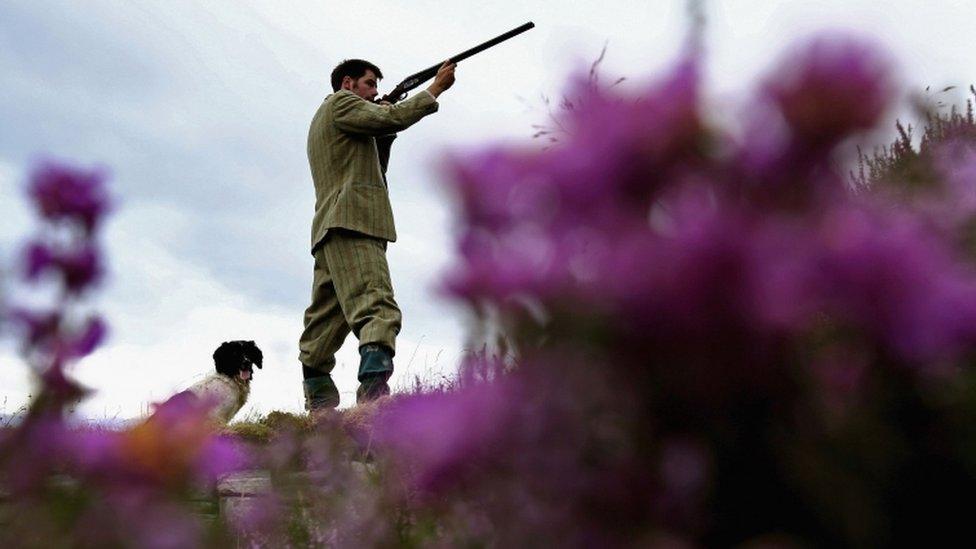Heather honey production halted by beetle pest
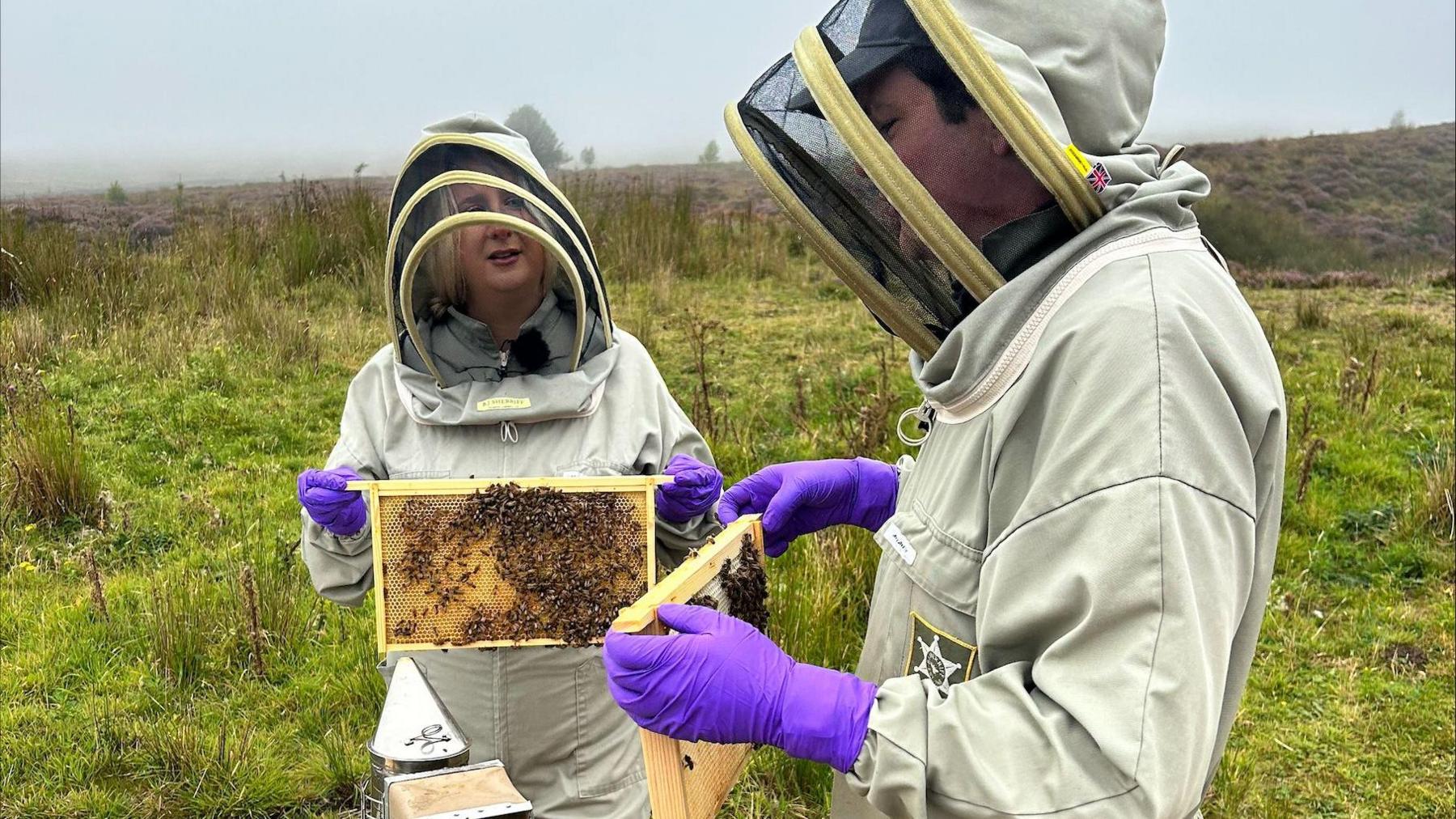
Honey supplies have taken a "worrying hit", one producer warns
- Published
Heather honey production has been brought to a halt by an increase in the numbers of a pest which eats the plant, beekeepers in the north-east of England have said.
The Northumberland Honey Company, which has beehives on the moorland in Acton, said the heather beetle had reduced the five to 10 tonnes of heather honey it usually produced at this time of year to zero.
Beekeeper Luke Hutchinson said this was a "big and worrying hit" for what was usually the company's biggest seller.
The Heather Trust, which works to protect moorland, said the warmer weather meant heather beetles had been laying more larvae on the stems, which then go on to strip the flowers.
Its director, Katrina Candy, said the country was losing huge swathes of moorland habitat at an "alarming rate".
"The equivalent of the city of Birmingham is lost every year - it's disastrous," she said.
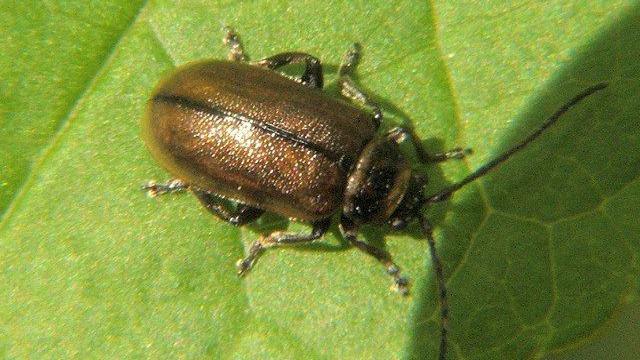
The heather beetle can range from brown to a dark brown-black
Mr Hutchinson said heather honey was usually the company's last crop of the year.
"It is one of the most significant and premium honeys that we can produce and usually the biggest volume we can produce," he said.
"This year, the heather beetle is stifling that."

Beekeepers use smoke to keep bees calm in hive inspections
Ms Candy said the number of heather beetles - or lochmaea suturalis, external - had become unmanageable.
By stripping the flowers from heather, leaving only stalks, the insects also dried out the land increasing the risk of wildfires, she said.
Their numbers could be reduce via using special cutting techniques, controlled burning and even a parasitic wasp, she added.
Follow BBC North East on X, external, Facebook, external, Nextdoor and Instagram, external.
Get in touch
Do you have a story suggestion for BBC Tyne?
Related topics
- Published10 August
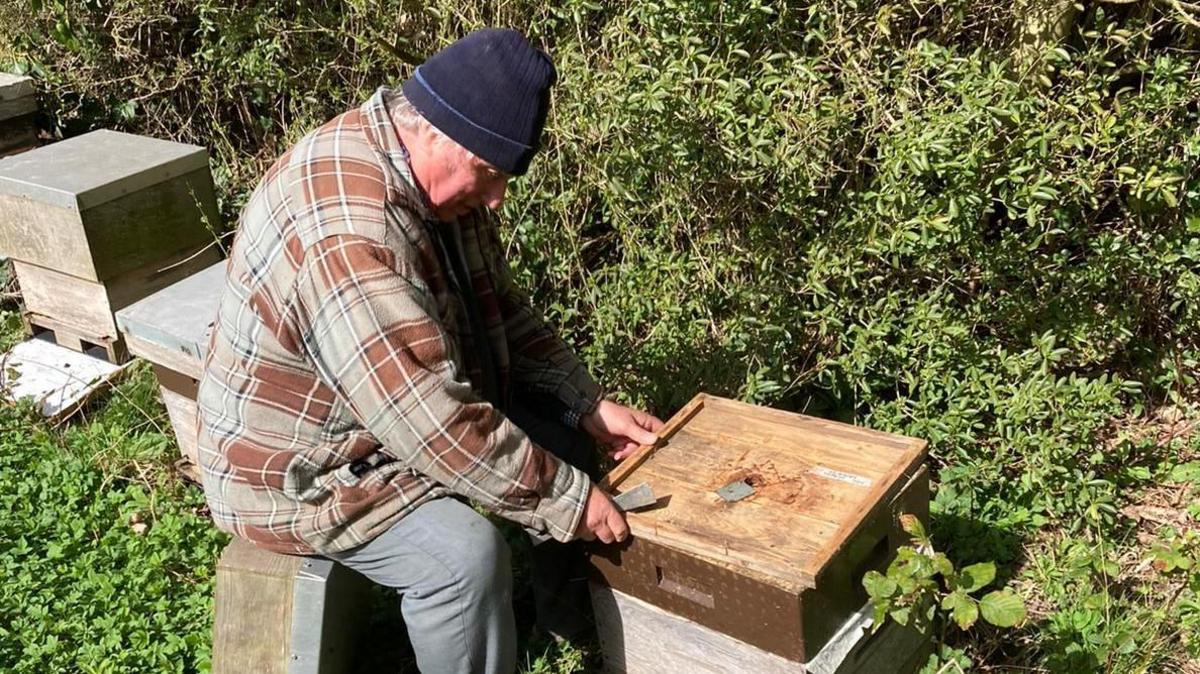
- Published26 July
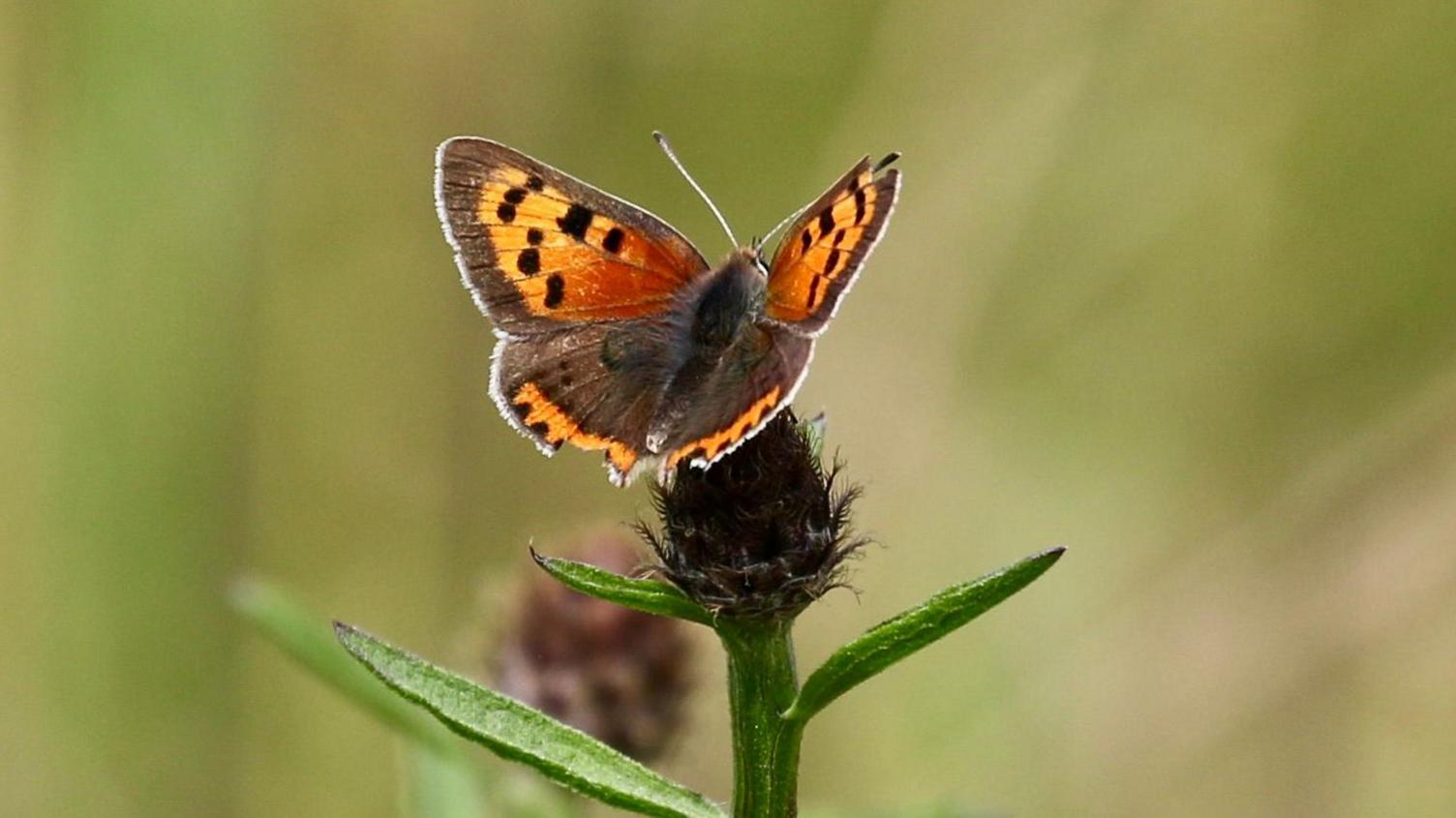
- Published12 August 2019
